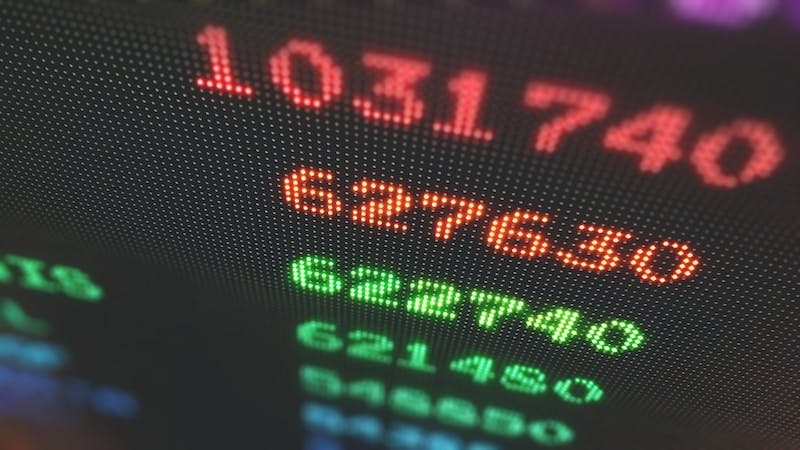When leaders are aware that they need to improve in their roles but aren’t receiving the candid feedback they truly desire, they often resort to personality assessments. Frankly, everyone in this day and age does, regardless of the context. We’ve lived through the peak Buzzfeed era, filling out endless quizzes, like “Which Hogwarts House Are You?” and “If You Think We Can’t Guess Your Zodiac Sign Based On Your Dessert Preferences, Think Again.” Or maybe that’s just me.
Wacky quizzes aside, what we’re really looking for when we take self-assessments and ask for feedback is more information about how others perceive us and how we perceive ourselves. We want to build self-awareness.
As psychologist Tasha Eurich’s research on self-awareness found, only about 10-15 percent of nearly 5,000 people fit the criteria of “self-aware.” This is a bold statement, suggesting that the overwhelming majority of people do not have full internal and external awareness of self.
Luckily for us, since the early 1900s (and technically Ancient Greece), scientists, academics, and business professionals have been working on models to help leaders (and regular Joes) reach higher levels of self-awareness, so they can understand their strengths and harness them to make their workplaces and the world better.
Here are some tools I’ve personally used to help cultivate awareness around my strengths and preferences.
Side note: Remember that leaders don’t require a specific set of gifts. Anyone can be a leader. What makes a great leader is how you use your gifts.
Myers Briggs Type Indicator (MBTI)
The original versions of the MBTI were constructed by Katharine Cook Briggs and her daughter, Isabel Briggs Myers, in the early 1920s, heavily correlating with Swiss Psychiatrist Carl Jung’s famous character archetypes. In 1944, the Briggs Myers Type Indicator Handbook was published to help women—then entering the industrial workforce for the first time—identify the jobs that would be the “most comfortable and effective” for them.
The work eventually attracted the attention of Henry Chauncey, head of the Educational Testing Service. With Chauncey’s “cosign,” the first MBTI manual was published in 1962, and it’s been the most popular U.S. personality assessment ever since.
What is it?
The MBTI is a self-reporting questionnaire (costing as little as $13.95 from the Myers Briggs shop, and free on 16Personalities.com) on how people perceive the world and make decisions. The test assigns four categories:
- Introversion vs. Extroversion
- Sensing vs. Intuition
- Thinking vs. Feeling
- Judging vs. Perceiving.
One letter from each category is taken to produce a four-letter test result, and there you have it: a label, such as “INFJ” or “ENFP”.

Although the MBTI resembles some psychological theories, it isn’t widely endorsed by academic researchers in the field because of its significant scientific deficiencies, including poor validity, poor reliability, and shallow, incomprehensive categorization.
Although it isn’t highly scientific, the MBTI’s four scales do have some correlation with four of the Big Five personality traits—a more commonly accepted framework, and one related to NEO-PI R, which I’ll cover in a second.
All in all, the MBTI can be used for understanding careers, but it can be misleading if we take it at face value. How can we realistically whittle down 7.9 billion people into 16 personality types?
Revised NEO Personality Inventory (NEO-PI R)
This is the more scientifically valid “cousin” of the MBTI.
The NEO was originally created as a three-factor model assessing Neuroticism, Extraversion, and Openness in 1978. Following the feedback of other prominent personality researchers, Paul Costa Jr. and Robert R McCrae added two categories—Conscientiousness and Agreeableness—to the original model.
Thus, in 1992, the NEO-PI R (Revised NEO Personality Inventory) was born. There have been new iterations created since, but the NEO-PI R is still the go-to model today.
Though they originally developed the assessment for adult men and women without overt psychopathology, at this point the test can be administered to children and people with different education levels.
What is it?
While not perfect, the NEO-PI R is accepted within psychological communities. It requires a trained psychologist and costs $85 for a short report (graphic description) or $110 for a long report (graphic description + interpretation report).
CliftonStrengths Talent Assessment
In the 1990s, under the leadership of Donald O. Clifton, Gallup developed the CSF as a quick (less than an hour) online measure of personal talent.
Then, in 2001, Gallup introduced the revolutionary talent measuring tool, StrengthsFinder, in the bestselling book Now Discover Your Strengths. It has more recently been renamed the CliftonStrengths talent assessment.
What is it?
The CliftonStrenths assessment identifies a person’s recurring patterns of thought, feeling, and behavior, and then helps you leverage your talents and consistencies into sustainable strengths.
The psychometric test is rooted in neuroscience and positive psychology and, giving you only 20 seconds to answer each question, doesn’t give you time to second guess yourself. You have to go with your gut when push comes to shove.
Out of the 36 strength dimensions, every individual has their Top 5. Your strengths are a gift unique to you, and this assessment helps you understand them within different contexts.
The assessment starts at $20 with many different resources to supplement it.
Enneagram
The Enneagram comes from Ancient Greek roots roughly 4,000 years ago. “Ennea,” meaning “nine,” and “gram,” meaning “drawing.” Since then, it’s gained notoriety and built validity contemporarily from the teachings of Bolivian psycho-spiritual teacher Oscar Ichazo in the 1950s and the Chilean psychiatrist Claudio Naranjo in the 1970s. Naranjo’s theories were also influenced by some earlier teachings about personality by George Gurdjieff and the Fourth Way philosophy. Since then, it’s become a staple as a basic personality assessment.
What is it?
It’s an insightful self-discovery and personal growth tool that can be applied both in business and personal settings.
Using our individual traits and childhood experiences, it describes how we, as individuals, fit into one of nine personality types. Each type has core motivations and fears that influence your approach to relationships, careers, stress, and conflict. It tells a narrative of how your type manifests when you’re your best self, your average self, and your unhealthy self, and offers fresh insights to help you understand why you are the way you are. By better understanding your core fears and motivations, you can become more fulfilled at home, at work, and in your relationships.
The best news is that you can find free Enneagram assessments all over the internet.
It is important to note, however, that—as is the case with most assessments that whittle down the world’s personalities into a small number of types—the Enneagram lacks solid scientific evidence.
Kolbe A™ Index
After years of making products to aid children on their educational journeys, Kathy Kolbe expanded her company’s focus to help adult learners and problem-solvers overcome barriers and maximize their success.
Kathy developed an instrument to measure the instinctive action and problem-solving styles of individuals. This dimension of the mind, called “conation” (not to be mistaken with cognition), determines how individuals can feel most comfortable and perform best while taking on any task.
What is it?
Kolbe measures your instinctive way of doing things, and the result is called your MO (method of operation). The Kolbe “Key Actions” range on continuums such as “prevent problems” vs. “initiate solutions,” and “stabilize” vs. “improvise.” Kolbe claims that it’s the only validated assessment that measures a person’s conative strengths, helping you gain a greater understanding of your own human nature and begin the process of maximizing your potential.
Kolbe can be used for relationships, personal use, business success, hiring, and—most notably—consulting.
The Kolbe A™ Index starts at $55.
DiSC Profile Assessment
Based on psychologist William Moulton Marston’s 1928 theory, Walter Clarke created the DiSC personality assessment in 1940, which measures personality in four dimensions—dominance, influence, steadiness, and conscientiousness.
What is it?
The questionnaire was mainly created for organizational use and can be used for leadership and executive development, management training, sales training, conflict management, team building, customer services, communication, and job coaching. Personality expert and researcher, Merrick Rosenberg, later built on the DiSC model, updating its application for team development, interpersonal relationships, and American presidential campaigns.
Similar to many of the other assessments, it labels individuals into one of the four dimensions, helping individuals understand the strengths and weaknesses of their fellow team members.

As for scientific validity, there has been some stability research done on DiSC, which found that one person can take the assessment multiple times and expect to get roughly the same response. Aside from the research, it has been successful as a tool in making groups work together more effectively across cultures and history.
Plus, it’s easy to use and administer. Prices range, but the most popular and applicable test, the “Everything DiSC Workplace Profile,” starts at $72 per person.
Leadership Circle 360 Profile
Over a 20-year period, Bob Anderson searched for an integrated leadership model, finally weaving the many threads of organizational development and leadership theory and research into the Unified Theory. As he incorporated it more and more into his work with leadership and executive teams, it ultimately evolved into the Leadership Circle 360 Profile.
The work both changed people’s personal lives and their business lives deeply. Leadership Circle has helped the likes of McDonald’s, Honda, and Pixar develop how their businesses communicate and thrive.
What is it?
The Leadership Circle 360 Profile assessment—based on several scientific models from fields, such as psychology, leadership development, and adult development—has the leader conduct a self-assessment, while the staff and any important stakeholders anonymously (for psychological safety) complete their own assessment of the leader’s capabilities.
The tool analyzes two key areas of leadership—creative competencies and reactive tendencies—both how the participant views themselves and how their teams view them.
Creative competencies, as Leadership Circle defines them, are your abilities to drive outcomes, continue learning, help draw out your team’s strengths, and align your team and the organization’s work and systems to the overarching vision.
Reactive tendencies, by their definition, describe a leader’s biases for caution over action, and defensiveness or forcefulness over constructive conversation and alignment-building—often due to the desire for control and/or approval from others.
Take a free self-assessment on their website to see if their services are right for you.

Finding Your Leadership Style
Finding your leadership style requires work and time, and it’s hard to know the right questions to ask yourself. That’s why we make efforts to gather objective, constructive feedback (see my earlier articles, The Necessity of Executive Feedback, Part 1 and Part 2) from our teams and resort to professional tools like the ones listed above.
When I was learning my own leadership style, I became interested in personality assessments. While no single model could provide me the full picture of how I showed up for others, I was able to identify consistent themes between the assessments I used—eliminating overreliance on any single framework and shaping a more well-rounded view of my leadership style.
Each of these frameworks strives to make sense of conscious and unconscious patterns in our own behavior, especially in the context of others. Especially since managers’ leadership style accounts for at least 70% of employee engagement scores, the key to better leadership, higher team performance, and better business results is, first, a better understanding of ourselves as leaders.
Sometimes, it can be challenging to do these assessments ourselves—or once we’ve completed them, figure out how to incorporate what we’ve learned into our work and leadership, and make changes where necessary. That’s why I’ve joined forces with Certified Project Management Professional and DiSC Coach Alex Suchman and Renée Rinehart, PhD, Leadership Consultant for INSEAD, to create Human At Scale.
Human At Scale is an interactive, five-week course to help leaders implement the principles of conscious leadership, culture building, and creating systems—for greater employee retention and mission fulfillment. Learn more and sign up here.
Love what you’re reading? Subscribe to our newsletter and never miss out on our latest posts.







